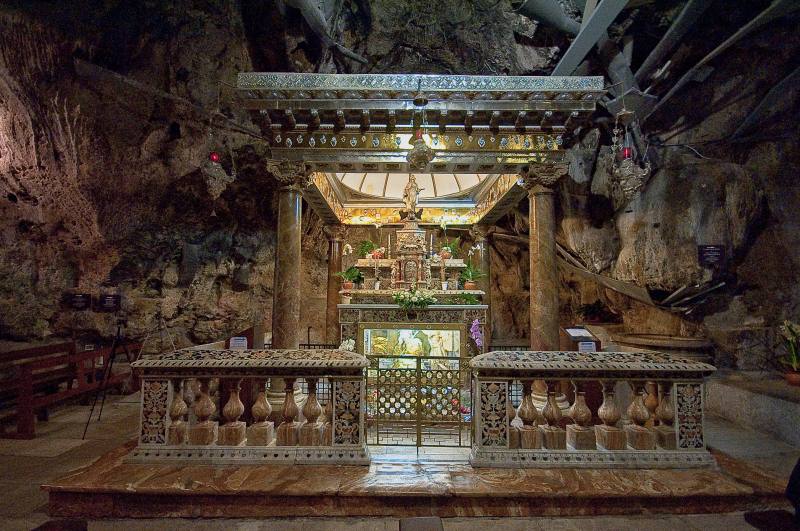
Itinerarium Rosalie
From the Quisquina hermitage to Monte Pellegrino: a journey of over 185 km
Over 185 kilometres: this is the length of the Itinerarium Rosaliae, a route created in 2014 that traces, somewhat loosely, the itinerary that Santa Rosalia had to follow to reach Monte Pellegrino from the Quisquina hermitage.
Dedicated to those travelling on foot, but also accessible on a mountain bike or on horseback, it unfolds in nine stages of about 20-25 km each, along dirt paths, secondary roads and disused railway routes, immersing itself in the woods of the Sicani Mountains, Monte Cammarata and the Ficuzza reserve, and among fields that tell of ancient farming and pastoral traditions, crossing the territories of fifteen towns and cities between the provinces of Agrigento and Palermo.
The starting point is the Eremo della Quisquina, with the monastery built at the end of the seventeenth century, right next to the cave where the saint had lived.
Following the death of the last friar, the small monastery is now managed by the Pro Loco of the nearby town of Santo Stefano Quisquina, and is open to visitors.
It is a place of rare charm, one of the numerous, even surprising, discoveries that dot the route, such as the Andromeda Theatre, an open-air theatre born of the visionary passion of the shepherd-poet Lorenzo Reina; the Museum of Mummies in the crypt of the Capuchin church in Burgio and the Bisacquino Clock Museum; the spectacular Cascata delle Due Rocche waterfall among the stone houses of the historic centre of Corleone; and the Scala Vecchia, the panoramic road up the slopes of Monte Pellegrino, winding its way through the woods and panoramas up to the Sanctuary of Rosalia, the final stage of the route.
Some of the towns along the way are well known, such as Palazzo Adriano, made famous by Giuseppe Tornatore, who shot the film "Nuovo Cinema Paradiso" there; Piana degli Albanesi, "capital" of the Albanian enclave in Sicily and proud guardian of Byzantine language and traditions (as well as excellent cannoli!); and Monreale, which with its Arab-Norman cathedral and delightful Benedictine cloister, an essential part of any trip to Sicily.
Others are less famous, even practically unknown to foreigners, because they are so far off the tourist circuits, but for this reason they also offer visitors the kind welcome and charm of secluded locations.
All preserve precious memories of the past, from the Olivetan abbey of Santa Maria del Bosco in Contessa Entellina to the picturesque tradition of the Ballo dei Diavoli, which is renewed every Easter Sunday in the medieval alleys of Prizzi, and all have a solid gastronomic tradition.
One of the pluses of the route is the opportunity to sample so many genuine products and dishes: cherries in Chiusa Sclafani, cheeses in Castronovo di Sicilia, broad beans in Campofiorito, extra virgin olive oil in Altofonte and peaches in Bivona, a village which bears witness to the oldest known cult of Santa Rosalia.








